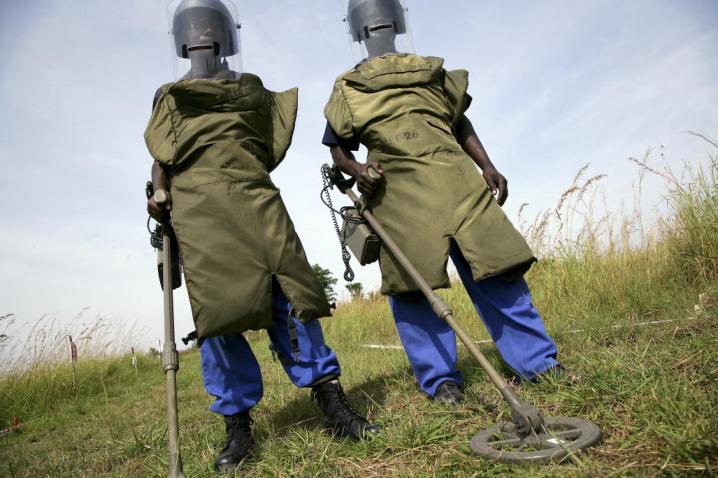
Disarming our world
Disarmament calls for ending the use of all kinds of arms – from firearms to landmines, and from nuclear bombs to chemical and biological weapons. It’s about a safer world. Having fewer arms helps to prevent and mitigate conflict, and reduces terrible human costs.
The United Nations has supported disarmament and arms control from its founding. In 1946, the very first resolution of the UN General Assembly established a commission to address concerns around atomic energy.
Unfortunately, the world today is still awash in weapons. Global military spending, already $2.4 trillion in 2023, continues to rise, with devastating effects. Illicit arms trading destabilizes regions, violates arms embargoes and feeds human rights abuses.
In 2021, small arms and light weapons, such as firearms, killed 260,000 people – one person every two minutes. In 70 countries and territories, some 110 million landmines and other explosives remain a painful, persistent legacy of conflicts. And at a moment of geopolitical tensions, the 12,500 nuclear weapons stockpiled around the world make the risk of a nuclear attack higher than at any moment since the Cold War.
Twenty-seven disarmament treaties cover different weapons and jurisdictions. They include the Nuclear Non-proliferation Treaty and the Arms Trade Treaty. Since a popular movement successfully pushed for the passage of the Anti-personnel Landmine Treaty in the 1990s, for example, more than 55 million landmines have been destroyed. Over 30 countries have become mine-free. Although much more remains to be done, such agreements have guided steps towards disarmament.
We must speak with one loud, clear voice. It’s time to stop the madness. We need disarmament now.”
United Nations Secretary-General (António Guterres, 27 February 2024)


What is nuclear disarmament?
Today, more than 12,000 nuclear weapons remain an existential threat to humanity. Learn more about what nuclear disarmament means and how global efforts have evolved over the years.

Why mine action matters
More than 25 years have passed since the Mine Ban Treaty was established and the UN Mine Action Service was created. Since then, millions of landmines have been successfully removed, but significant challenges remain. Over 60 countries and territories are still contaminated by landmines today.

Explosive weapons in populated areas
The devastating effects of explosive weapons on children are wide-ranging and can reverberate long after conflict. UNICEF explains why children are particularly vulnerable.

Small arms as weapons of choice for criminals and terrorists
Small arms like firearms kill more than 700 people a day or one person every two minutes. The head of UN Disarmament talks about the devastating and widespread impact of small arms.
